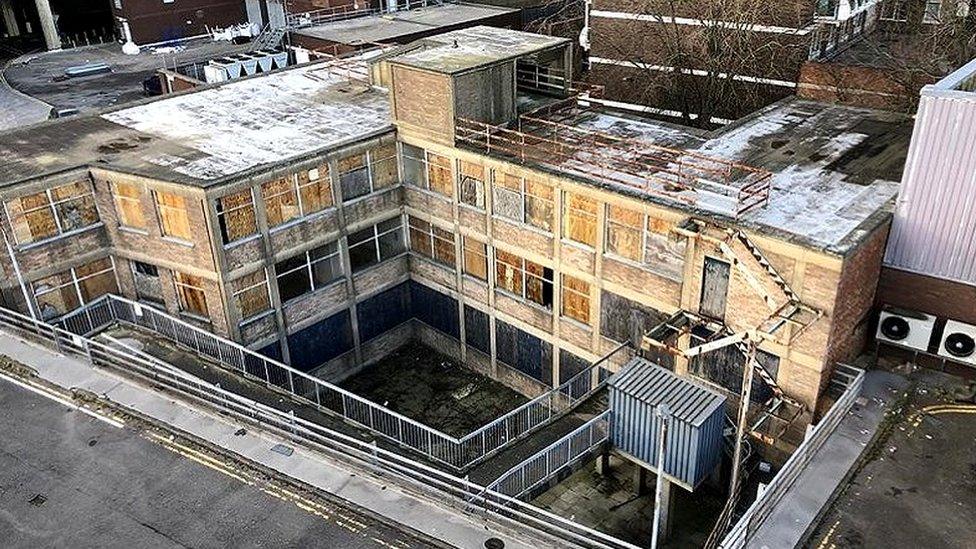Council buys buildings to regenerate town centre
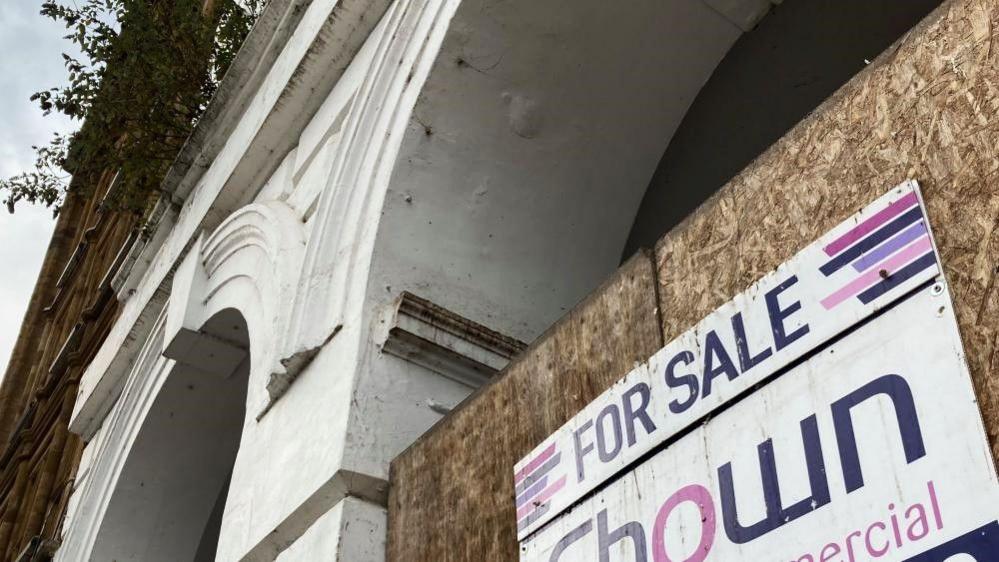
The Corn Exchange in Northampton has been bought by West Northamptonshire Council
- Published
A council has been investing millions of pounds into regenerating a town centre and has purchased derelict shops, offices and pubs.
West Northamptonshire Council's latest acquisition was the Northampton Corn Exchange - a Grade II-listed 19th Century building, which has stood empty for more than a decade.
According to the authority, the site was a key part of its regeneration project and had been up for sale for £1.9m. The purchase was part of the plan to redeveloping Greyfriars in Northampton town centre.
At a time when other councils have been forced to make cuts to services, how can this local authority afford to buy properties worth millions of pounds?
'Back into use'
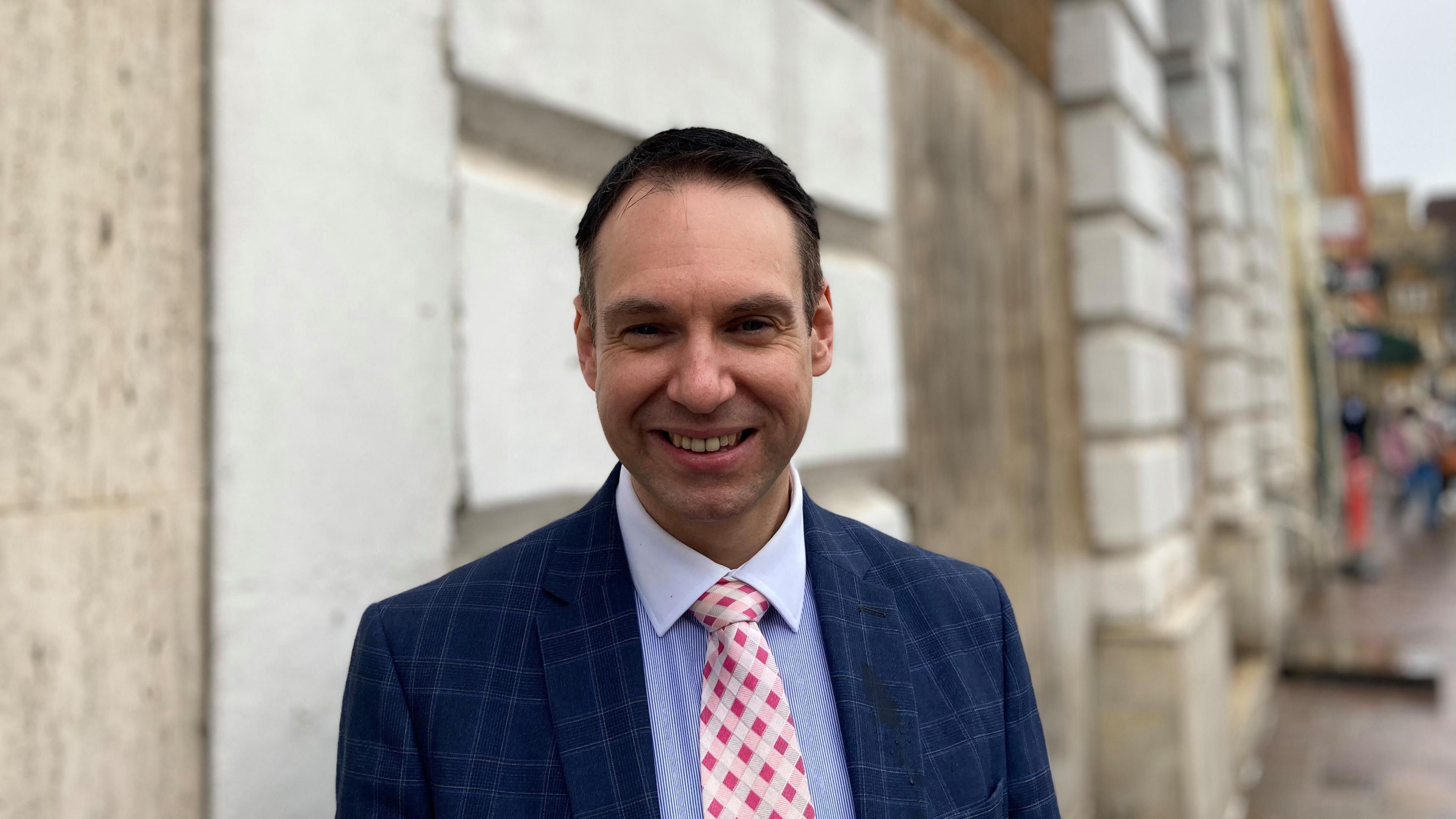
Dan Lister said the Corn Exchange would connect the Market Square to Greyfriars
Daniel Lister, a councillor and cabinet member for local economy, culture and leisure on the Conservative-led authority, said the money to buy buildings did not come from council tax.
"People need to remember there is a revenue budget and a capital budget," he said.
"So [buying buildings] would be funded through a capital purchase, which then we only have to pay like people do on their mortgage [with] interest on it, but then we can off set that in future when we bring it back into use in terms of business rates and council tax.
"Whereas things like adult social care, children’s trust, roads - all those things people talk about - all comes out of our daily revenue pot and that comes from your council tax equivalent."
The council has not revealed the final offer it made on the building.
Last year West Northamptonshire Council purchased the former job centre in Northampton town centre and it acquired the BHS outlet in 2022.
Big transformation
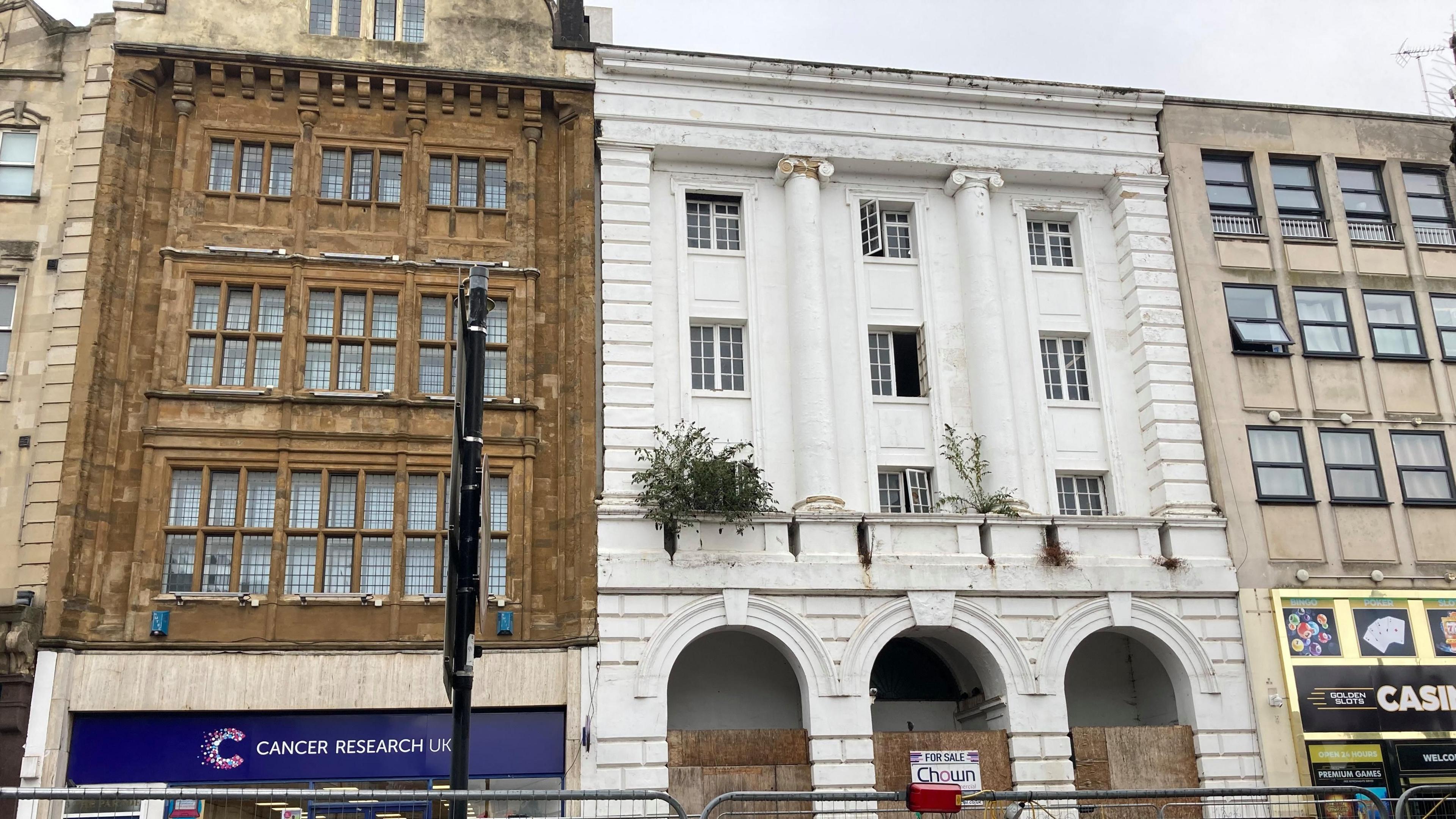
The Corn Exchange on Northampton Market Square has been empty for more than a decade
The overall regeneration plan has recently been discussed at several council meetings, although at a recent full council meeting it was voted on without debate.
Bob Purser, a Labour councillor, told a cabinet meeting: "I would have thought this is probably the biggest transformation in Northampton town centre since the great fire.
"If we think of what Mike Ingram [local historian] used to say that Northampton’s been in decline since the late middle ages maybe this is an opportunity to reverse that - a site of this scale gives us that opportunity."
Building in disrepair

Koulla Jolley said more due diligence was needed over the redevelopment plans
Yet not everyone agrees with the process.
Koulla Jolley, a Labour councillor and shadow cabinet member for local economy, culture and leisure, said: "More due diligence was needed on this.
"The Corn Exchange is in poor state and together with the Grade II-listed status it could mean that it’s unsuitable for development, which is a real big concern of ours.
"We also don’t want another long-term building just sitting there which is costing the taxpayer so much money.”
Lister said: "We should be intervening where the private sector can’t take the hit and develop this and make a profit out of it.
"The other alternative is we leave it empty or [a developer] comes forward with [plans] for inappropriate uses on there."
'Balanced budgets'
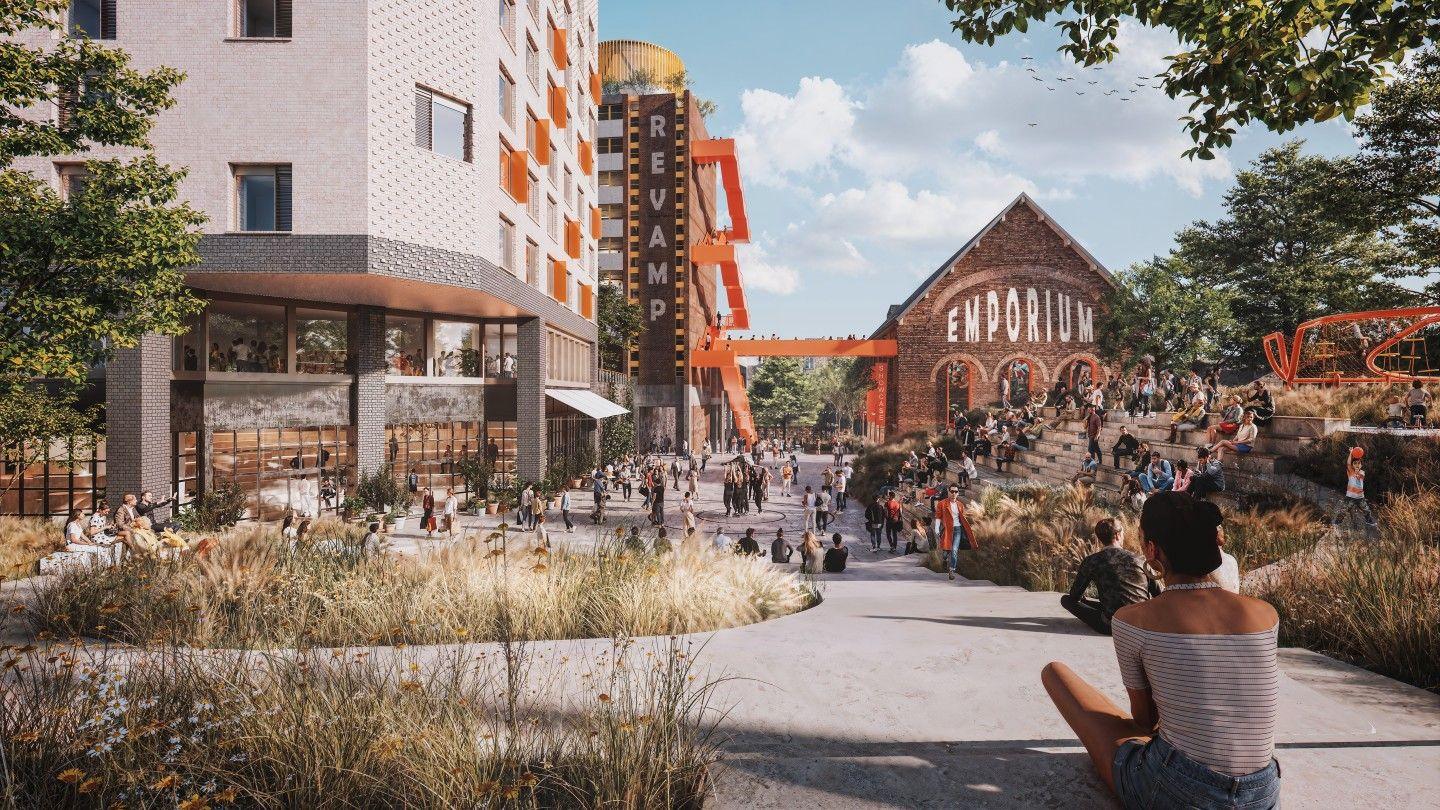
West Northamptonshire Council hopes the work will rejuvenate Northampton town centre
Analysis by Andrew Sinclair, BBC East political editor
New research by the BBC has found that across the country the financial pressure being faced by local councils is getting worse. All of them are already in the middle of cutting millions of pounds from this year’s budgets but nearly all are predicting a further shortfall in future budgets which is getting larger every year.
The problem is most acute for our county councils and unitary authorities which oversee the big spending departments of social care, children’s services and highways.
Both of Northamptonshire’s councils have already needed financial support from the government. But despite this our figures suggest that by 2026 North Northamptonshire will be facing a cumulative shortfall of £61m which is 16% of its net budget. While West Northamptonshire is predicting a £72m shortfall (8% of its budget). Both may be able to use reserves to help plug the gap but there will still have to be some tough decisions.
Over the last 15 years, councils have learnt to slim down their back office, reduce services and look for alternative ways of making money. Every year it gets harder.
The new government is promising a longer term funding settlement to help councils with their planning. But could it do more?
Other suggestions include lifting the cap on how much they can put up council tax by or being given permission not to have to balance their budget every year.
And they would all like it if the Chancellor of the Exchequer Rachel Reeves could find some more money for councils in her budget.
Kate Ogden, a senior research economist at the Institute for Fiscal Studies, external, said every investment by an authority needs to be a considered decision.
She said: "Councils aren’t allowed to borrow to cover their day-to-day spending on local services – they have to set balanced budgets.
"But they can borrow for capital spending, such as for new libraries, roads or social housing. These investments – and whether they are affordable for the council, and value for money – need to be considered on a case-by-case basis."
The works form part of the authority's Northampton town centre masterplan, external.
West Northamptonshire Council said it hoped redevelopment plans for the Greyfriars area will be ready by summer 2025.
Get in touch
Do you have a story suggestion for Northamptonshire?
Follow Northamptonshire news on BBC Sounds, Facebook, external, Instagram, external and X, external.
Related topics
- Published28 September 2024

- Published18 September 2024
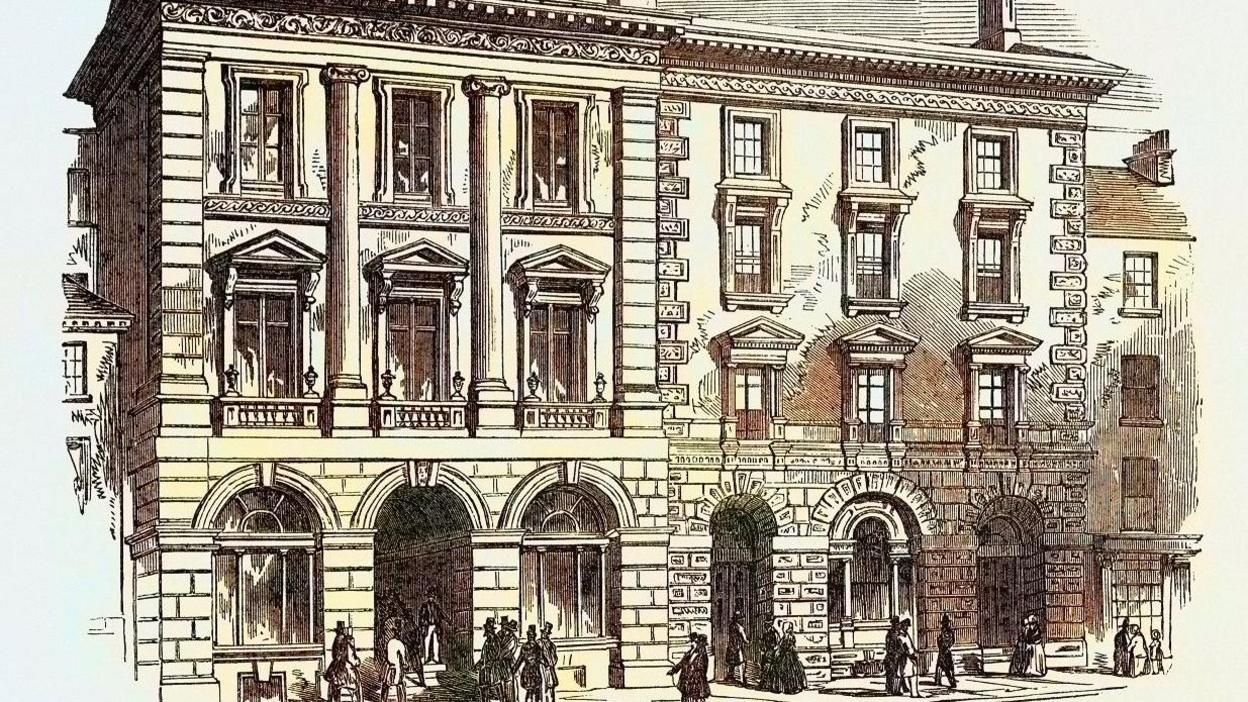
- Published16 August 2023
